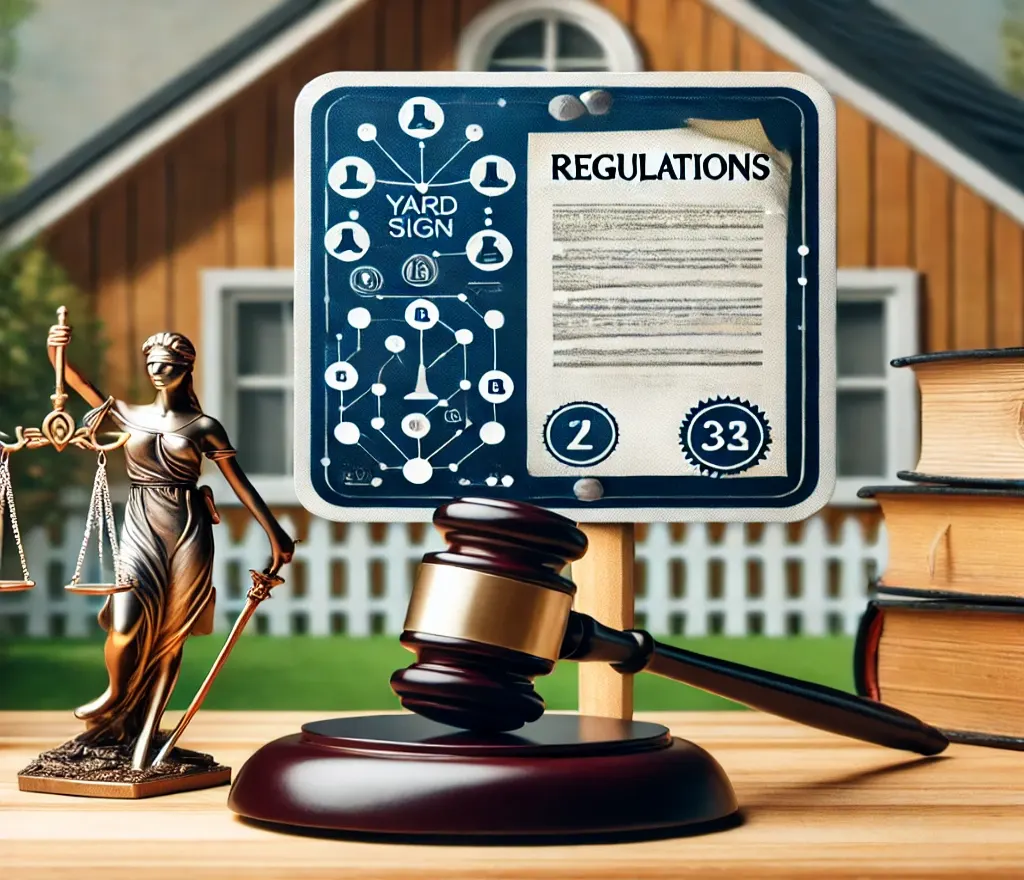Yard signs have become an increasingly popular method for individuals and businesses to express their messages, promote events, and support causes. However, before placing a yard sign, it’s crucial to understand the Yard Sign Laws and Regulations that govern their use. This knowledge not only ensures compliance with local laws but also fosters a respectful community environment.
The Foundation of Yard Sign Laws
The primary goal of Yard Sign Laws and Regulations is to balance the right to free speech with community standards and public safety. Generally, yard signs are recognized as a form of expression protected by the First Amendment. Nonetheless, this protection does not grant carte blanche to place signs indiscriminately.
Key Considerations
When thinking about installing a yard sign, several key factors should be taken into account:
- Placement Restrictions: The most critical aspect of yard sign laws revolves around placement. Typically, you can place a sign on your own private property, but there are often strict prohibitions against placing signs on public property such as parks, sidewalks, or medians. This helps maintain a clear and safe environment for all.
- Size Limitations: Local governments frequently impose size restrictions on yard signs. These limits aim to prevent visual clutter and ensure that signs do not obstruct drivers’ views. Depending on the area, the maximum dimensions for a yard sign can vary significantly, so it’s wise to consult local regulations.
- Duration of Display: Many municipalities have rules regarding how long you can display your sign. For instance, if your sign is advertising a specific event, local ordinances may require you to remove it within a certain timeframe after the event has concluded. Adhering to these timelines is essential for compliance.
- Content Restrictions: While yard signs are generally protected as free speech, there can be limitations on the type of content allowed. Signs that contain obscene material or incite violence are typically prohibited. Moreover, political signs may be subject to additional rules during election periods, dictating when they can be displayed and how long they must remain up after an election.
Local Regulations in Toronto
Understanding the specifics of Yard Sign Laws and Regulations in Toronto can provide valuable insights for residents and businesses alike. In Toronto, the city has established clear bylaws governing the use of signs, ensuring they adhere to safety and aesthetic standards.
- Permit Requirements: In Toronto, smaller temporary signs—like those advertising garage sales or community events—usually do not require a permit. However, larger or more permanent signs may necessitate obtaining a permit from the city. It’s essential to contact local authorities or visit the city’s website to clarify the requirements.
- Political Signage: During election cycles, regulations for political signs become particularly pertinent. Candidates must follow specific guidelines regarding the size and placement of their signs. Additionally, they must remove their signs shortly after the election concludes to avoid penalties.
Consequences of Non-Compliance
Failure to adhere to Yard Sign Laws and Regulations can result in various penalties, which differ based on local laws and the nature of the violation:
- Fines: The most common consequence of violating yard sign regulations is the imposition of fines. These can range from minor fees to substantial penalties, especially for repeated violations. Some areas may impose daily fines for each day a sign remains up past the allowed timeframe.
- Sign Removal: Local officials have the authority to remove signs that do not comply with regulations. This is particularly common if the sign poses a safety hazard or has been placed without permission on public or private property.
- Legal Action: In more severe cases, especially for repeated offenders or significant violations, local governments may pursue legal action. This could result in additional fines or court orders mandating the removal of non-compliant signs.
Also read: Yard Sign Printing
Tips for Compliance
To avoid the pitfalls associated with yard sign regulations, consider the following best practices:
- Research Local Laws: Before placing a yard sign, it’s vital to research the specific regulations that apply in your area. Local municipal websites often provide detailed information on size, location, and content restrictions.
- Respect Property Boundaries: Always ensure that signs are placed on private property and do not encroach on neighboring properties or public spaces. Respecting property lines is essential for maintaining community goodwill.
- Be Timely: For event-specific or political signage, pay attention to local rules regarding when signs can be placed and how long they can remain up. Installing signs too early or keeping them up too long can lead to unnecessary fines.
- Secure Necessary Permits: If a permit is required for your sign, be diligent in following the application process. Ensure all fees are paid and understand the conditions attached to the permit.
Final Thoughts
Yard signs are a potent means of communication, but they come with responsibilities that should not be overlooked. By understanding Yard Sign Laws and Regulations, individuals and businesses can effectively promote their messages while respecting community standards and safety protocols.
In places like Toronto, where specific rules are clearly defined, adhering to these regulations not only prevents legal complications but also enhances the neighborhood’s aesthetic and safety. With the right knowledge and approach, yard signs can serve as an impactful way to share messages while contributing to a positive community experience.
(FAQ)
- What are yard signs considered?
- Yard signs are a form of free speech protected by the First Amendment, but their placement and content are regulated by local laws.
- Do I need a permit for my yard sign?
- Typically, small, temporary signs don’t require a permit, but larger or more permanent signs might. Check with local authorities for specifics.
- Where can I place my yard sign?
- You can place signs on your own private property, but avoid public spaces like sidewalks or parks unless allowed by local regulations
- Are there size restrictions?
- Yes, many areas impose size limits on yard signs to prevent clutter and safety issues. Refer to local ordinances for details.
- Can I display any content on my sign?
- Not all content is allowed; signs cannot contain obscene material or incite violence. Political signs may have additional restrictions.
- What are the consequences of violations?
- Violations can result in fines, removal of the sign, or legal action, depending on the severity and frequency of the violation.
- How long can I keep my yard sign up?
- Local regulations often specify how long signs can be displayed, especially for events or political campaigns.
- Can I place a sign on someone else’s property?
- No, you need permission from the property owner before placing a sign on their land.


